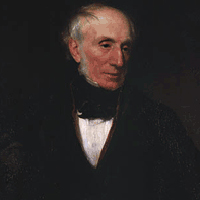Mutability by William Wordsworth: Summary and Analysis
Mutability composed by William Wordsworth, is a traditional sonnet of fourteen lines in iambic pentameter. Wordsworth talks about the transitory-ness or changeability of worldly things and the power of time over great and small things. The poet portrays the life itself through the structural organization, directional symbolism, change in tone and imagery. He is successful at showing the constant change everyone experiences - living and nonliving things - through their lifetime.

William Wordsworth (1770-1850)
In life, the pattern of “highs to lows” and vice versa is experienced by all. The meaning of the life is only achieved when we realize the fact that we can go from a “low” point in our life to a “high” and sometime the opposite happens. He clearly articulates that life is continuously and constantly in flux. No single moment is stable and permanent, life is always “mutating”. Thus, the title of the poem plays a vital role in the interpretation and understanding of the poem itself. Mutability is defined as “the quality of being capable of mutation”.
Wordsworth uses imagery throughout the poem to assert the concept of dissolution. Many things change back and forth, much like the states of matter in nature-solid to liquid; back to solid, back to liquid. He clearly exemplifies this by the imagery he uses when describing snow (frost) melting away. Additionally, Wordsworth uses a “scale” as another form of imagery to illustrate this never-ending change. It can be a numerical scale or a musical scale. The scale is a perfect example of how music changes-notes go up and down; tones go high and low.
The poet focuses on the universal fact that truth is never destroyed, but its outward forms, however permanent they may seem, are destroyed like the melting frosty dew making the hill and plains white and like the fall of the high tower of the rulers. They could not endure even the weaker shout of “the unimaginable touch of Time”. In other words the destruction of those things that had once seemed permanent, and the recognition that such destruction is widespread, greets, like solemn but impressive music, the man who is not distracted by crime, greed, or anxiety.
Truth is indestructible, but its material forms, however long lasting they may be, disappear like the frost in the sunny morning and like the powerful kings and emperors in the past. The notes are melancholy in this poem because they remind us of the death and destruction which are unavoidable Death. It destroys everything or everyone. No living thing wants to die, so these deaths-provoking notes are sad. The theme of this poem is that we should not fix our hearts upon the outward show of things, all of which are destroyed by time and are forgotten.
The language of this sonnet is highly formal - not only in diction, but also in word order (“Truth fails not”). “The tower sublime” may refer to the Bastille. Those who are not criminal, who are not greedy and who are not very much worried, will hear the melodious bout sad tunes of death affecting the high and the low equally.
The pattern of mutation is present in the structure of the poem too. The first six lines talk about direction, musical notes and a scale-things that represent never-ending change. However, the next eight lines are still talking about change-while the poem’s structure itself changes-Wordsworth denotes that there are things in life that do not “change”. The unchangeable thing is just “Truth”, however, the outlook can be destroyed.
To conclude, Wordsworth talks about changes and transformation are the supreme power that times has over things whether big or small. That is why the significant “Time” is capitalized in the poem, and brought up at the last line to show the dominance.
Cite this Page!
Sharma, K.N. "Mutability by William Wordsworth: Summary and Analysis." BachelorandMaster, 20 Nov. 2013, bachelorandmaster.com/britishandamericanpoetry/mutability.html.
Related Topics
My Heart Leaps up when I Behold
Ode: Intimations of Immortality
A Slumber Did My Spirit Seal (Lucy Poem)
"I Travell'd Among Unknown Men" (Lucy Poem)
She Dwelt Among the Untrodden Ways (Lucy Poem)
Strange Fits of Passion Have I Known (Lucy Poem)
Three Years She Grew in Sun and Shower (Lucy)
Biography of William Wordsworth
 |
bachelorandmaster.com |